Background
With the rapid development of information technology, informatization construction has become the long-term goal of urban management, and the application of high technology in urban management has become a necessary means to improve urban management methods and enhance the level of urban management. The total number of urban components is huge, with various categories and models, and the overall location is widely distributed. These characteristics undoubtedly increase the difficulty and complexity of the census work. Existing traditional surveying and mapping methods, such as RTK, total stations, etc., consume a lot of labor costs, are inefficient, and difficult to obtain all-round information about land features, making it impossible to fully present many land features, which affects the comprehensiveness of the geographic information system. Therefore, how to quickly obtain and digitally store feature and facility information plays a key role in the cost, accuracy, and efficiency of urban census projects.
Urban Management Survey
1. Data Collection
This time, we use our self-developed LiGrip handheld laser scanner for data collection. The LiGrip handheld laser scanner can be equipped with a variety of sensors to quickly capture a wide range of scene data; it supports multi-platform and multi-mode operations such as backpack, vehicle, and airborne; it supports a variety of high-precision mapping methods such as PPK-SLAM, RTK-SLAM, and pure SLAM, can quickly obtain the point cloud data with absolute coordinates.
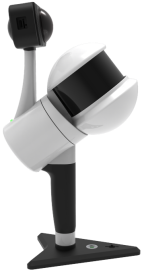
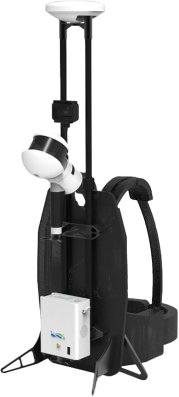
Before collection, the surveyors can go to the site to survey in advance and plan the collection route in advance to avoid missed acquisitions and excessive repeated scanning due to uncertain collection routes during collection.
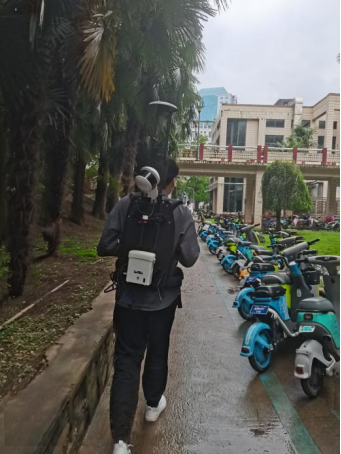
2. Data Processing
After data collection, we can use LiFuser-BP software to process the collected data with one click and quickly obtain high-precision point cloud data.
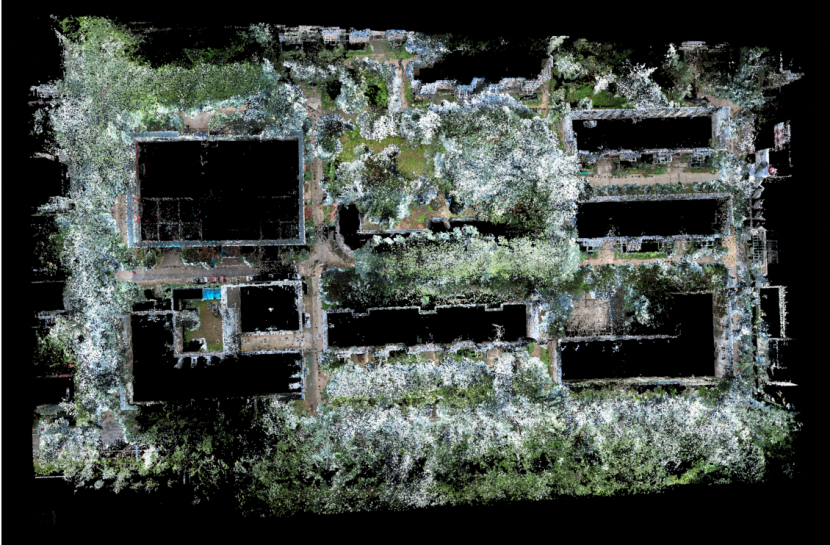
Point Cloud Data
3. Vector Map Production
The topographic map vector drawing work uses the LiDAR360 MLS. LiDAR360 MLS is a mobile laser scanning(MLS) feature intelligent extraction and analysis software independently developed by GreenValley International, which supports the processing and analysis of LiDAR point cloud and image data obtained by mainstream vehicle-mounted, backpack, or handled mobile mapping systems on the market.
Based on the leading artificial intelligence algorithm, the software performs massive point cloud data editing, 3D feature extraction and analysis, 3D vectorization of road elements, etc. It has the features of rich function, convenient operation, intelligent and efficient, friendly interaction. It has a complete processing chain from MLS point cloud data processing to road asset survey,road maintenance, high definition map and other industry results delivery. LiDAR360MLS accelerates information extraction with intelligence and depicts the real world with digitalization.
The specific drawing process is as follows:
(1)Load data and select sections
The software supports loading point cloud, trajectory, and image data, and supports multi-source data overlay browsing and measurement. Data is clipped based on bounding boxes so that information such as parking spaces, zebra crossings, signs, lane lines, etc. can be clearly displayed.
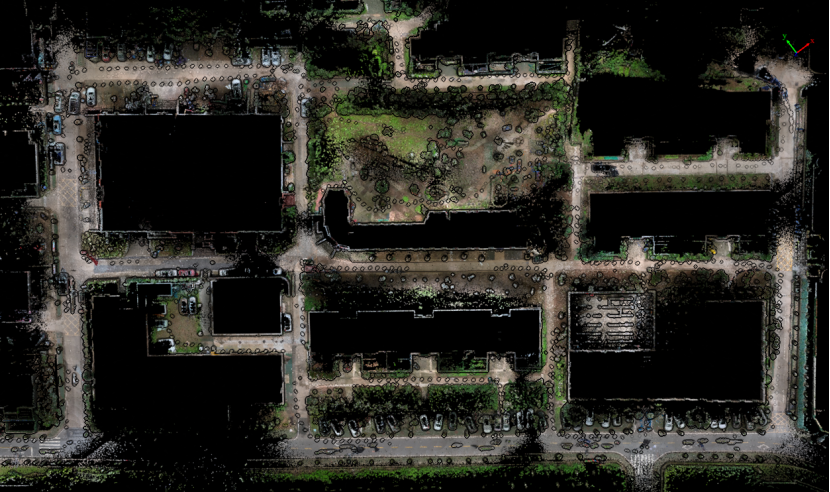
Select section
(2)Layer settings and property configuration
The software supports the customization of project-specified layers and attribute fields, meets the diverse requirements of different specifications in the industry, and meets various types of industry applications. At the same time, layer styles and field content information can be configured in advance to facilitate attribute editing and entry.
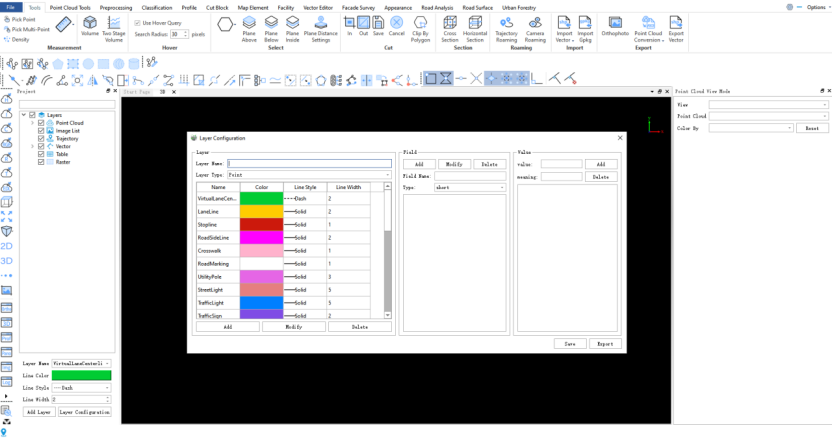
(3)Road shape drawing
It is mainly used to generate vectorized results of elements related to road shape. The vector result generation method supports semi-automatic and manual methods.
a. Lane line detection
Including lane solid lines or lane dashed lines, click two points with the left mouse button to obtain the starting point and direction point along the selected direction, and perform automatic lane line detection starting from the starting point.
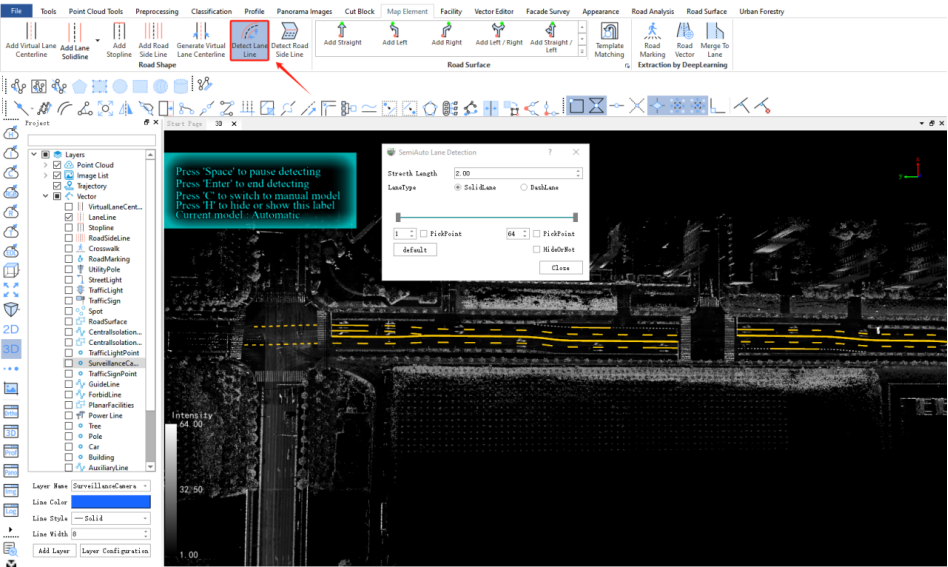
b. Quickly generate lane center lines
According to the lane lines on the left and right sides of the same lane, the lane center line is generated with one click, and the lane solid line and the dashed lane line can be selected.
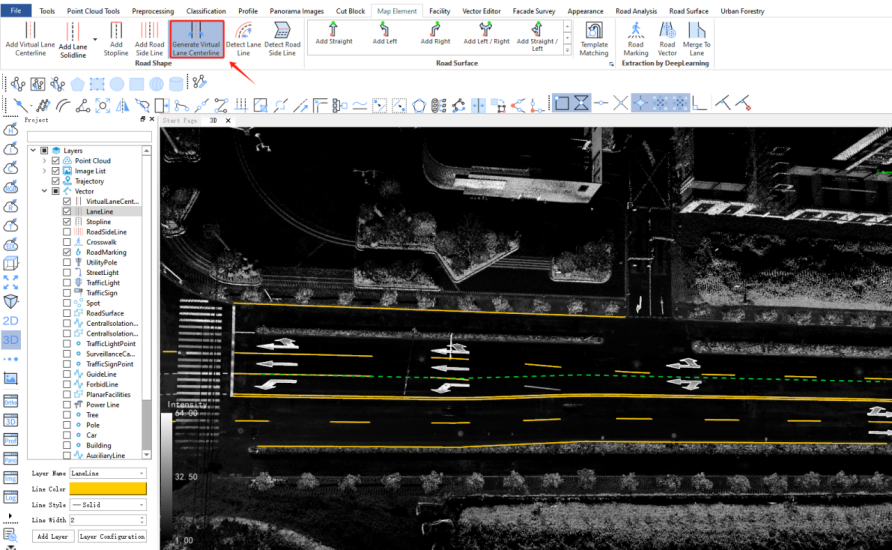
(4)Road surface rendering
It is mainly used for the vectorization production of various ground signs such as arrows, crosswalks, deceleration signs, and no-stop lines.
a. Fully automatic extraction of road signs
Automated deep learning-assisted ground landmark extraction from large amounts of point cloud data.
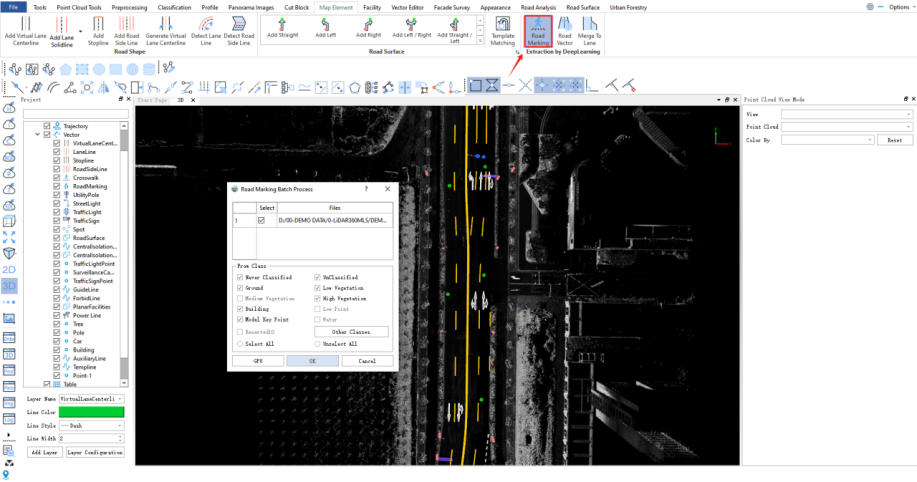
b. Template matching
The software has built-in Chinese national standard size arrow templates, as well as Chinese national standard size crosswalk warnings, deceleration signs, no U-turns and other ground signs, which can be used to automatically match the templates using the three-key-point box to select the point cloud, and then directly get the vectorized results that fit in the point cloud date.
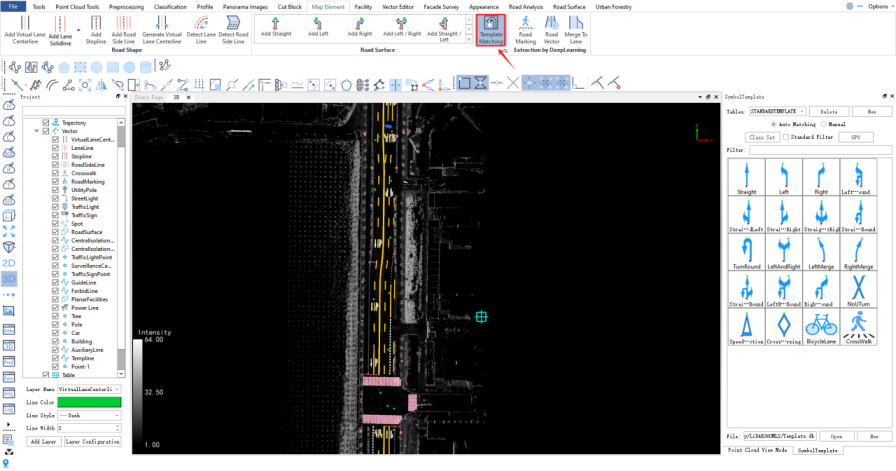
c. Road surface human-computer interaction editing
It is mainly used for the vectorized manual production of various ground signs such as arrows, crosswalks, deceleration signs, no-stop zones and so on.
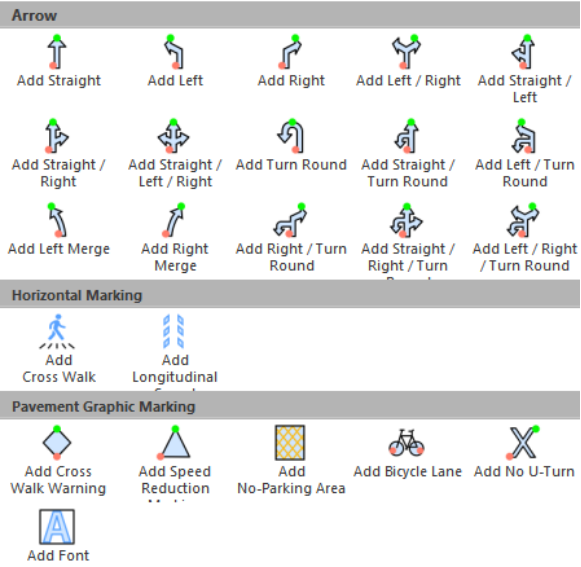
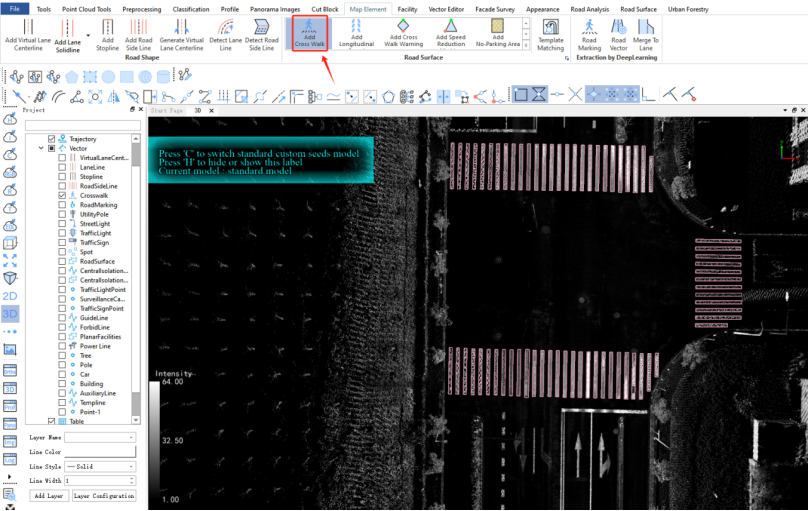
Crosswalks
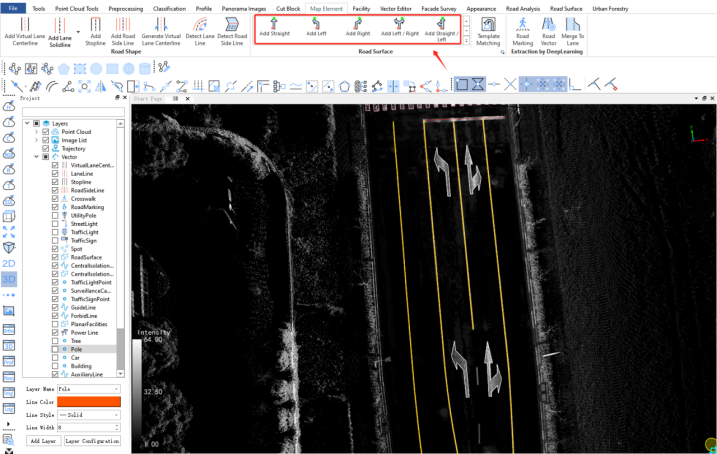
Arrows
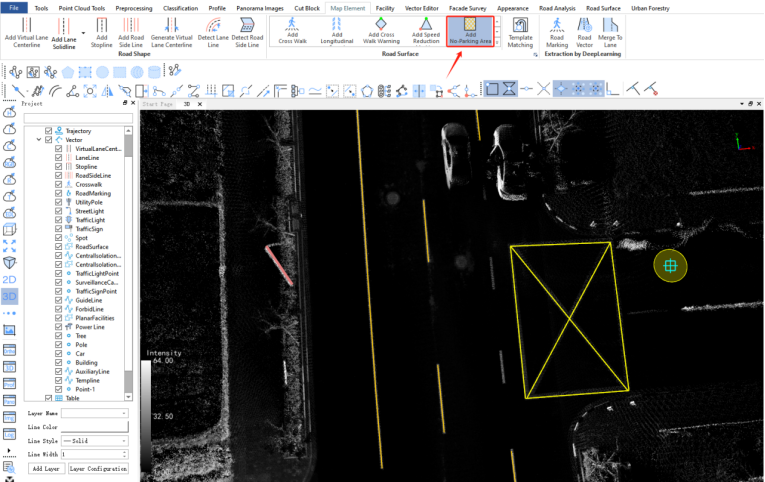
No Parking Zone
(5)Road infrastructure drawing
a. One-click detection of road facilities
Use panoramic images to assist in the automatic identification of traffic signs, manhole covers, monitors, bus stops, traffic lights, garbage bins, street lights, and underwater grate lights on road facilities.
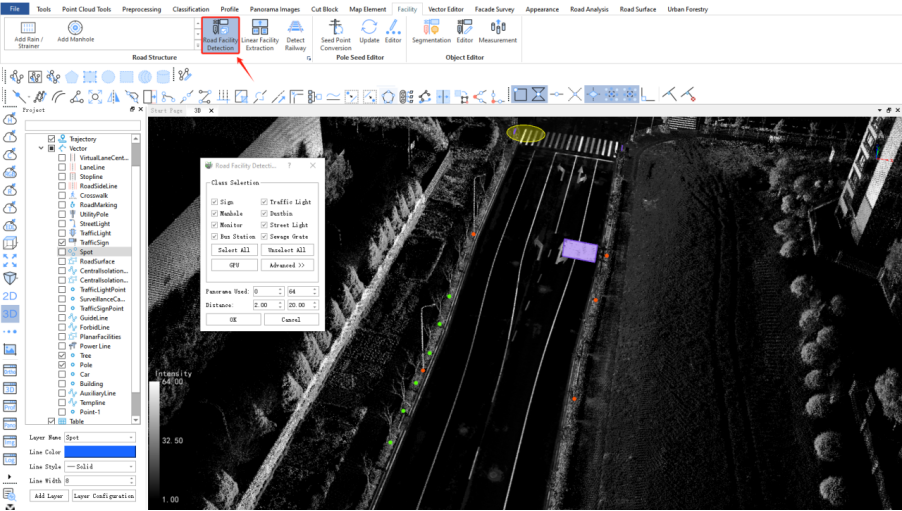
b. Road facilities human-computer interaction editor
Vectorized production of road accessories, including pole detection, power line detection, adding traffic signs, adding parking spaces, adding drain pens, adding manhole covers, etc.
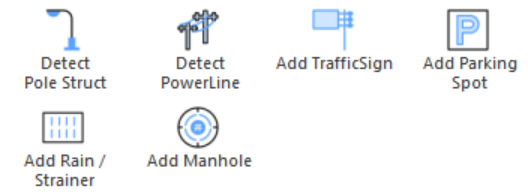
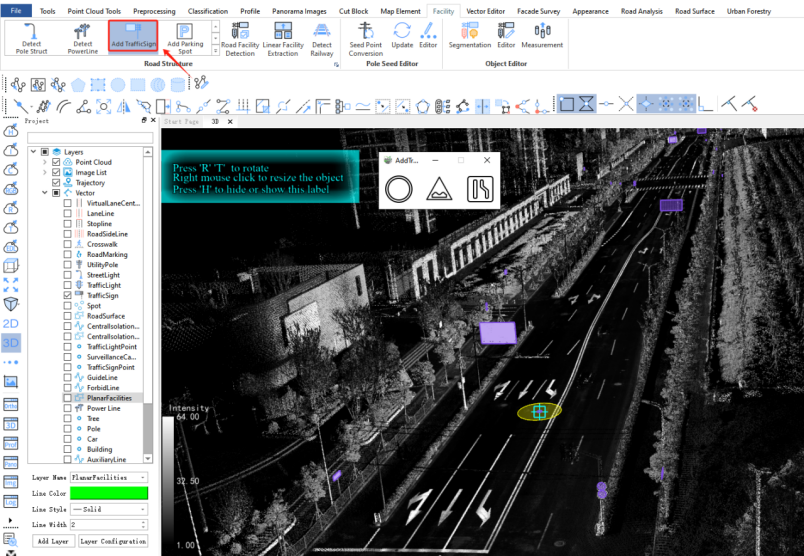
Traffic sign
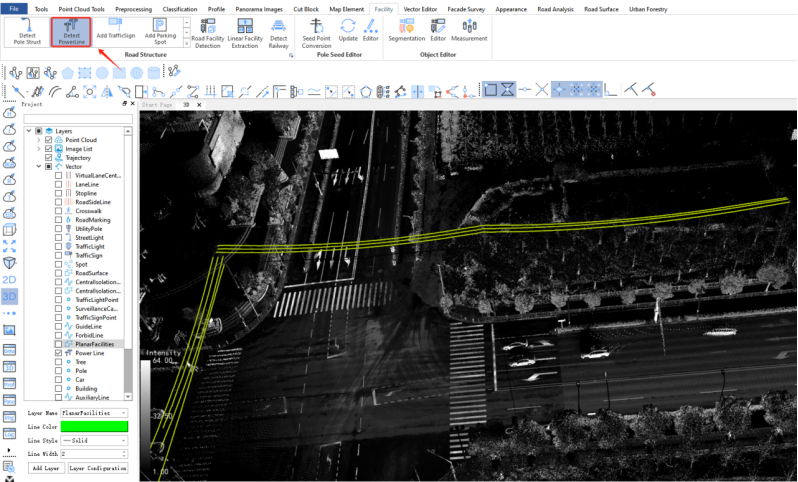
Powerline
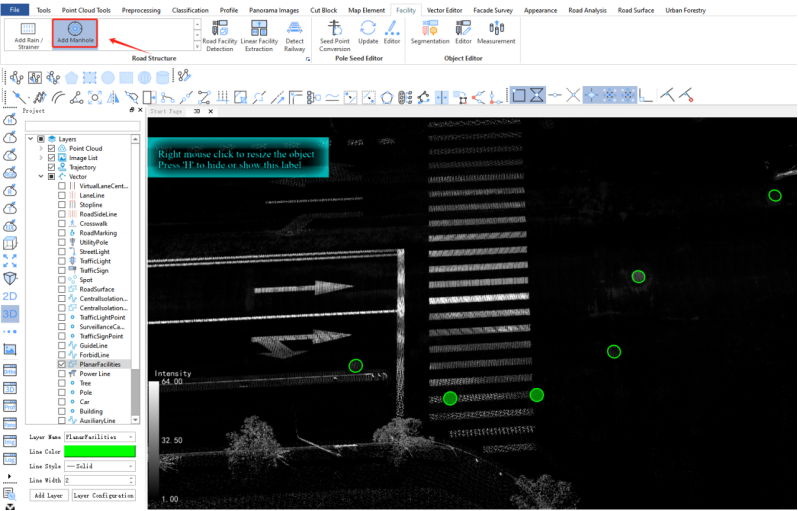
Manhole
(6)Symbol
The software symbol library has huge resources, and users can easily locate and insert symbols according to specific needs for vivid display of elements.
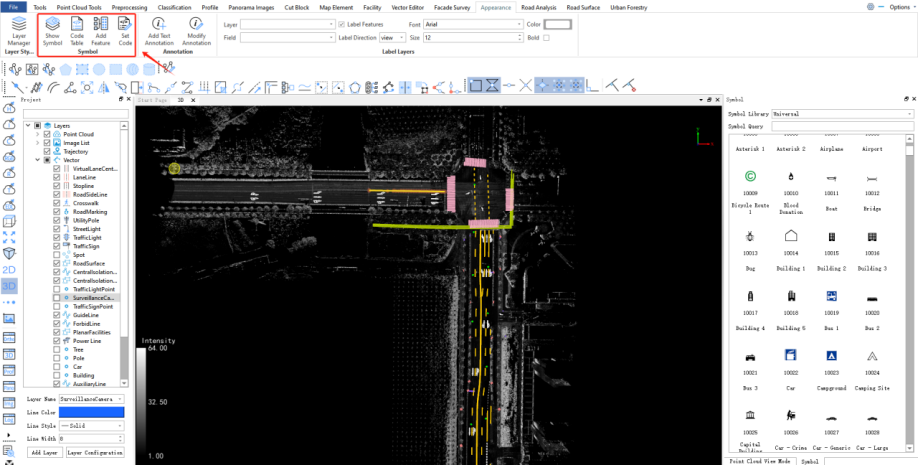
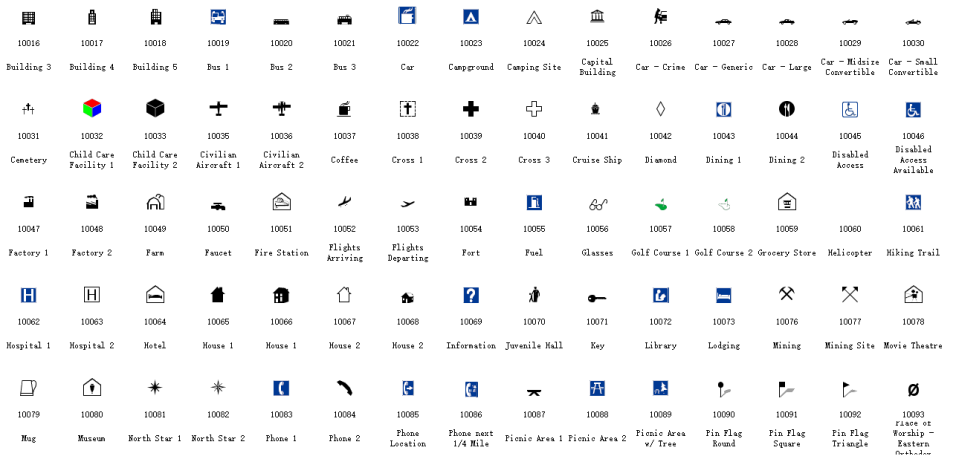
Symbol library
(7)Other parts description
The software provides rich vector drawing functions, such as garbage bins, street signs, greening, buildings, living areas, etc. Users can easily draw these elements to achieve customized designs and add rich details to maps, floor plans, or other graphic content to make graphics more vivid and detailed.
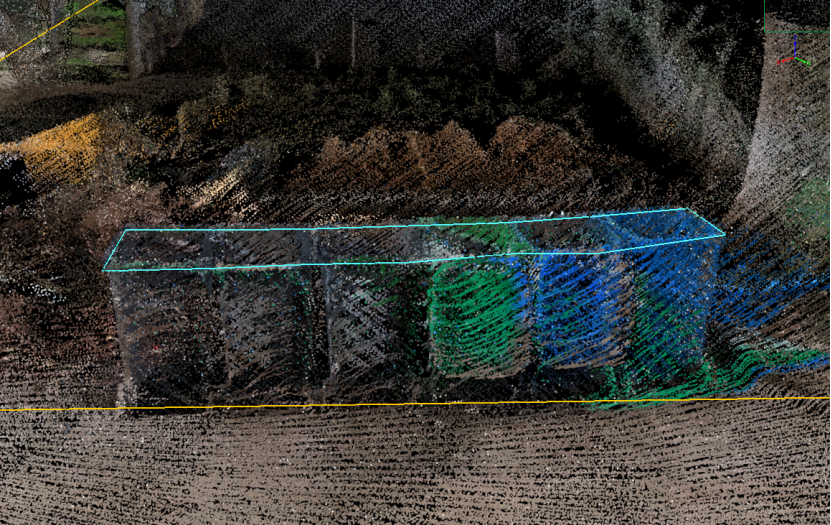
Garbage Bin
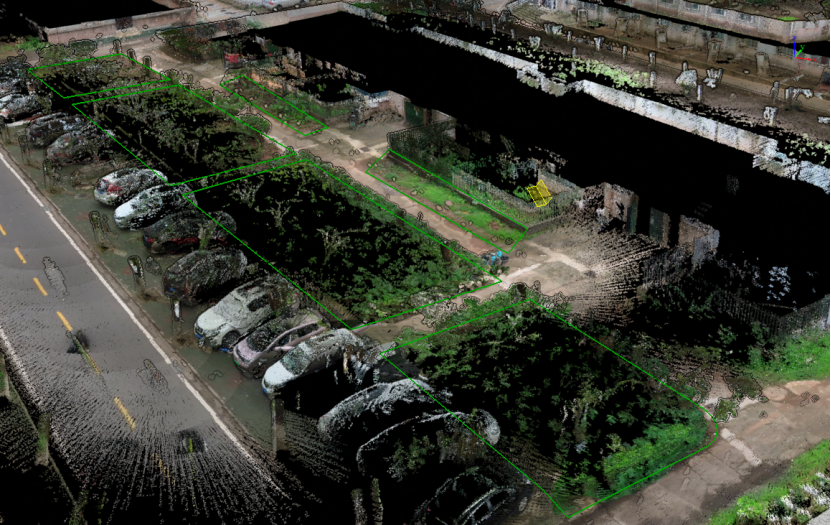
Greening
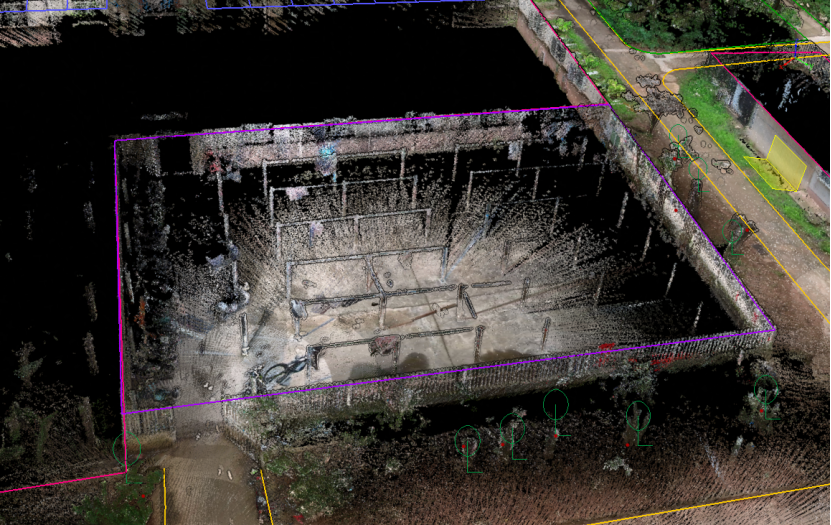
Living Area
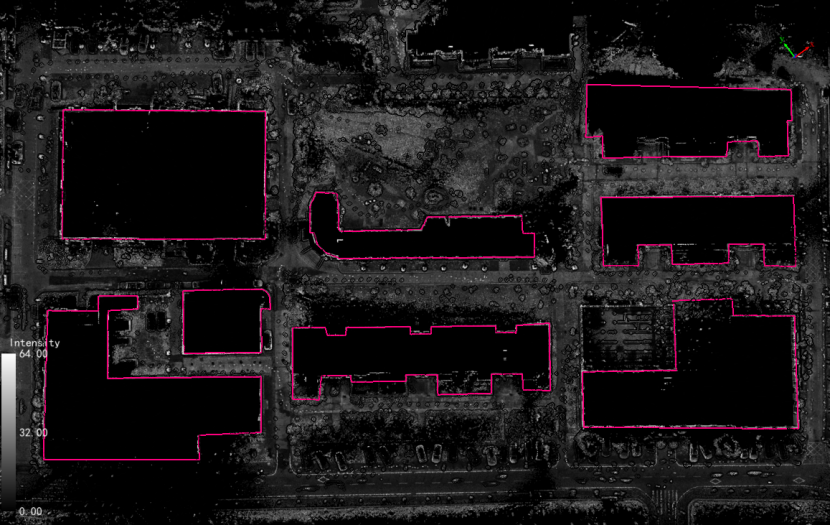
Building
4. Results export
Vector data can be exported to various formats such as shp, GEOTSON, KML, CSV, and dxf, and used as input to third-party software for data display or further data processing.
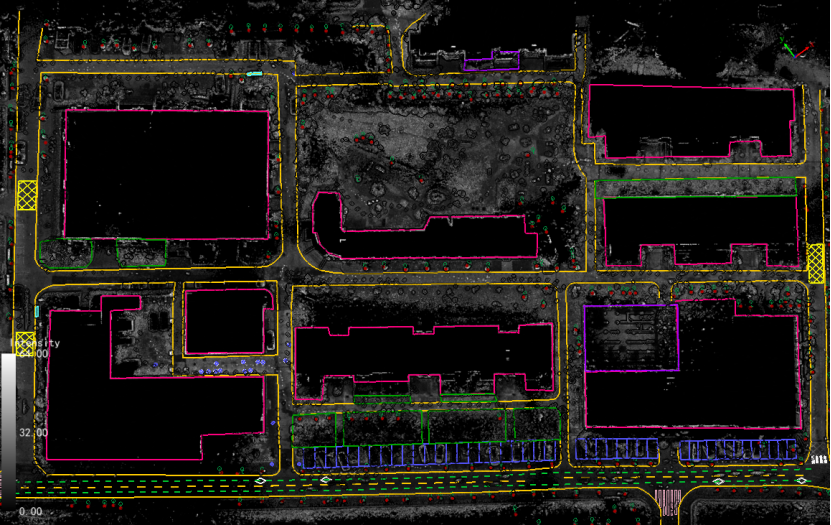
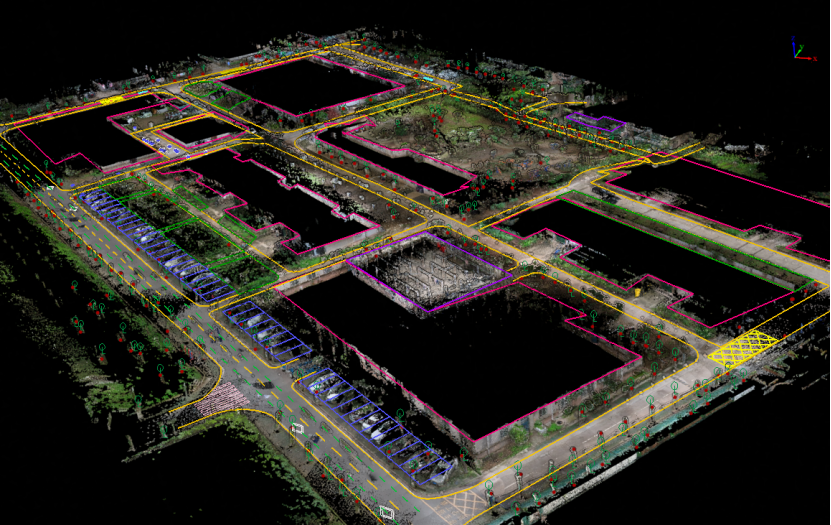
Conclusion
The GreenValley City Management Survey Solutions, uses mobile measurement systems and integrates self-developed algorithms to efficiently and intelligently extract urban facility information from point cloud and image data, while reducing the difficulty and risk of collection by field personnel. The collection efficiency and accuracy are much higher than traditional measurement methods. It can quickly extract information on components and facilities in an automated, intelligent, fast and legal manner, actively promoting the intelligent and efficient development of digital city construction.
